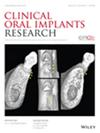Medication-Related Osteonecrosis of the Jaws in Patients on Antiresorptive Medication With Dental Implants. A Scoping Review
Abstract
Objectives
Patients receiving antiresorptive medication (AR) for osteoporosis or cancer are at risk of medication-related osteonecrosis of the jaws (MRONJ), especially after surgical procedures. Dental implant (DI) placement in high-dose AR (HDAR) patients is widely discouraged, and thorough counseling is recommended for low-dose AR (LDAR) patients. However, data on the role of AR type, dose, and duration remain limited. This review evaluates MRONJ associated with DIs, focusing on AR type and accumulated dose, and identifies local and systemic risk factors.
Materials and Methods
This review follows the PCC framework for PRISMA-ScR, comparing patients on AR who developed DI-related MRONJ to those who did not, based on the available clinical evidence. A systematic search was conducted on April 13, 2024, in PubMed, Embase, and Cochrane Library. Two reviewers independently screened and extracted data; a third reviewer resolved disagreements. Data extraction included demographics, primary disease, AR type, dose, treatment duration, DI location, and MRONJ details.
Results
Of 2201 articles, 28 studies were included involving 76 patients with 215 DI (154 in LDAR, 61 in HDAR). The development of MRONJ was reported in 15 studies involving LDAR and four studies on HDAR.
Conclusions
Evidence was insufficient to confirm an association between accumulated AR dose and MRONJ associated with DIs. No specific risk factors were identified, emphasizing the need for standardized reporting on AR type, dosage, treatment duration, and intervals to facilitate comprehensive risk assessment. Until evidence-based guidelines emerge, DI therapy in HDAR or long-term LDAR patients should be limited to specialized centers.


 求助内容:
求助内容: 应助结果提醒方式:
应助结果提醒方式:


